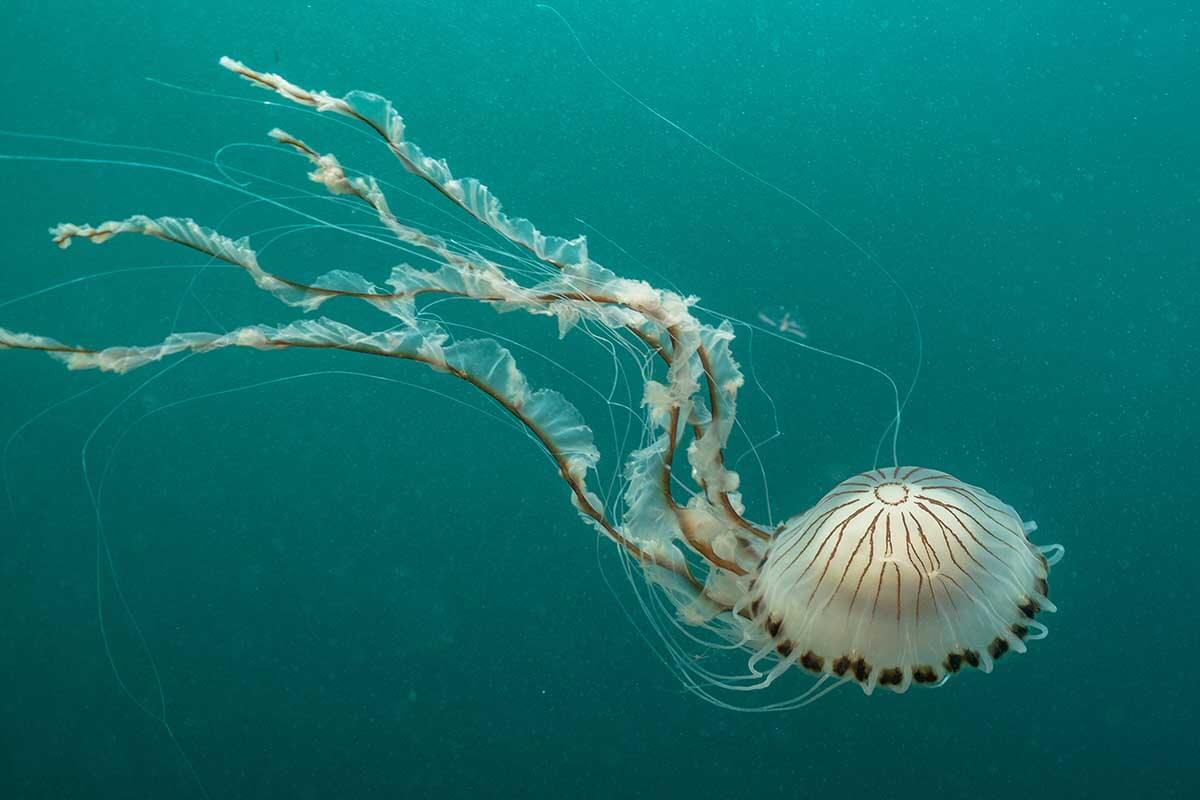
The Marine Conservation Society’s (MCS) long-running wildlife sightings project focuses on two key species around the UK: jellyfish, and the turtles that follow jellyfish blooms as a source of food. The charity is once again asking beach and sea goers to share their sightings of either animal to support its ongoing research.
Jellyfish are present around the year in UK waters, but larger swarms occur between spring and autumn as the jellyfish follow blooms of plankton, which bring with them eggs and larvae of the fish, crustaceans, starfish and molluscs that also rely on the plankton for sustenance. Sighting records from 2021 suggest that compass jellyfish are the most common around UK shores, making up 36% of reported sightings.

Jellyfish are an important part of the food chain, connecting the microscopic world of plankton to larger marine animals. Many species feed on jellyfish but they are particularly appealing to turtles. Six of the world’s seven marine turtle species have been spotted following jellyfish blooms in UK waters, most commonly the leatherback, which is currently listed by the IUCN as ‘Vulnerable’ to extinction.
Jellyfish and turtles are vital components of ocean biodiversity, and both are potential indicators of the effects climate change, while also being at risk from its impacts. Reporting sightings of the jellyfish and the turtles that follow them will support the Marine Conservation Society and other scientific and conservation organisations in tracking their movements in order to identify potential threats and implement better marine protections.

‘For more than 17 years, beachgoers across the UK have been contributing to scientific research by sharing their wildlife sightings with us,’ said Amy Pilsbury, Citizen Science Project Lead at the MCS. ‘It’s a key part of our work and plays a vital role in better understanding and protecting our ocean.’
The first report based on the data collected by citizen scientists, which included the first distribution maps of the surveyed species, was published by the MSC in 2014, supported by its partners at the University of Exeter. Since the 2014 paper, the wildlife sightings project has recorded several extensive blooms of barrel jellyfish and several summers of Portuguese man o’ war mass strandings.
MCS will continue to run its wildlife sightings project to identify changes in the distribution and frequency of mass jellyfish blooms over time. The data will help to explore any potential links to ocean warming brought about by climate change, or other possible factors such as overfishing.
For more information on how to identify jellyfish and turtles, and to report a sighting, please visit the Marine Conservation Society’s website.


